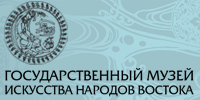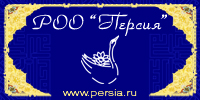 Tibet, a photo essay by Tatyana Kudryavtseva, opens this issue.
Tibet, a photo essay by Tatyana Kudryavtseva, opens this issue.
2007 - Year of China in Russia
- Mikhail Titarenko, Member of the Russian Academy of Science, Director of the Institute of Far Eastern Studies, gave an interview to the "Oriental Centre Collection", announcing the program of events that are being held and will be held in Russia as a part of the Year of China. This year will definitely remain in history as the year of the dialogue of cultures. The interview has a title full of suggestion, "China has something to be proud of..."
- Mark Ulyanov. The First Emperor and His Army. The article presents a detailed account of Qin Shihuangdi, the first Emperor of China, and the famous Terracotta Army, buried near the Emperor’s tomb. The archaeologists continue making impressive discoveries.
- Viktor Usov. He Outlived His Times... The article is devoted to the last emperor of the Qing dynasty, the line of Manchurian Emperors who ruled in China for more than two and a half centuries. Pu Yi was enthroned when he was a three-year-old boy, and ended his days as an ordinary citizen of the People’s Republic of China. The old building of the prison in Fushun, where Pu Yu has spent several years as a convict No. 981, is now a museum.
- Nikolay Listopadov. "Some Things Come Strangely Close Sometimes..." The author looks patronisingly on modern fans of extravagant fashion in Moscow. To him, they seem just spiritless imitators of ancient and modern customs of the East. The authors share his impressions with the readers.
- Sofia Karanjia. "Kind Spirits" of Valentin Korovikov. Valentin Korovikov, a journalist who had worked in India for quite a long time, had amassed a full-scale collection of madhubani, popular Indian art. This is the whole encyclopedia of characters and themes: gods of Indian pantheon, epic and mythological scenes, symbols of fertility and prosperity, village ritual scenes. Valentin Korovikov had collected these works of art before the start of mass production of low-quality mass production of madhubani works, which makes the collection unique indeed.
- Elena Katasonova. Manga-mania. Today, one the Japan’s most characteristic features are the manga cartoons and graphic novels, a primary segment of Japanese mass culture that conquered the whole world. The first person who devised a picture that changed along the line of the story, was Toba Sojo (or Kakuyu), a Japanese monk who realized the idea in his "Scrolls of Frolicking Animals and Humans" (12th century). The author of the article traces the history of this artistic phenomenon, and describes various trends of manga-culture.
- Olga Bibikova. The House of Allah. Islam formed itself as a self-consistent religion by signifying its originality in various features, including the mosque, a ceremonial structure intended for gatherings of the believers. Although the architecture of the first Islamic mosque in Madinah had changed in the course of centuries, being influenced by various other architectural styles, the ritual of salat, the Islamic prayer, is the same as it used to be in the 7th century.
- Vladimir Belyakov. John of Antikhania. An essay about Ivan Bilibin, Russian artist who lived in Egypt in 1920-es. His art reflects the images of this country. "It is comfortable to work here, and what is most important, it is ideally quiet and calm," wrote Bilibin. Rare photographs and drawings by the artist accompany the essay.
- Mark Golovizin. Abundant Towns of Timbuktu and Djenne. Medieval authors left enthusiastic descriptions of the African towns of Timbuktu (Tombouktou) and Djenne, the source of gold for Medieval Europe. Nowadays, the real treasures of these towns in Northern Mali are mud mosques, repositories of ancient manuscripts, Qur’anic schools and, of course, religious thinkers. The author of the article became an eyewitness to all this, visiting Timbuktu for an academic conference.
- Svetlana Ryzhakova. Lady Glimmer: Two Journeys to the Abodes of Tara. The author had met Goddess Tara two times, while travelling in Nepal and Tibet, and during the celebration of the new February moon in Tarapitha, a sacred town in Bengal. Both Buddhist and Hindu devotees venerate Goddess Tara. She unites countries and people, and fulfils the wishes of everyone who applies to her.
- Larisa Kolmykova. The Man Who Found Nefertiti. For quite a few years, German researcher Ludwig Borchardt studied Ancient Egypt and organised archaeological excavations. His most important finding is the bust of Queen Nefertiti, a well-known work of art, which is now kept in the Aegyptisches Museum in Berlin. Ludwig Borchardt, who greatly advanced the science of archaeology, had recorded his name in history, but many consider him also a rogue, who smuggled the all-time treasure to Germany. The article partly fills the shortage of Russian-language information about this scholar.
- Aleksandr Kadyrbaev. On Caspian Frontiers. The politics of Russian Empire in Caspian region in the first half of the 19th century was aimed at developing all-round relations and co-operation with Iran, and at peaceful integration of Caspian Kazakhs and Turkmens into Russia. Undoubtedly, this politics contributed to the future economic development of the region.
In the end of this issue our reader will find traditional "Orientnet" column.
Please e-mail your wishes, suggestions and comments to the following address: orientnet@rsl.ru.
You can find the summaries of the previous issues online, by visiting our section of the Russian State Library Web-site: http://orient.rsl.ru/en/






